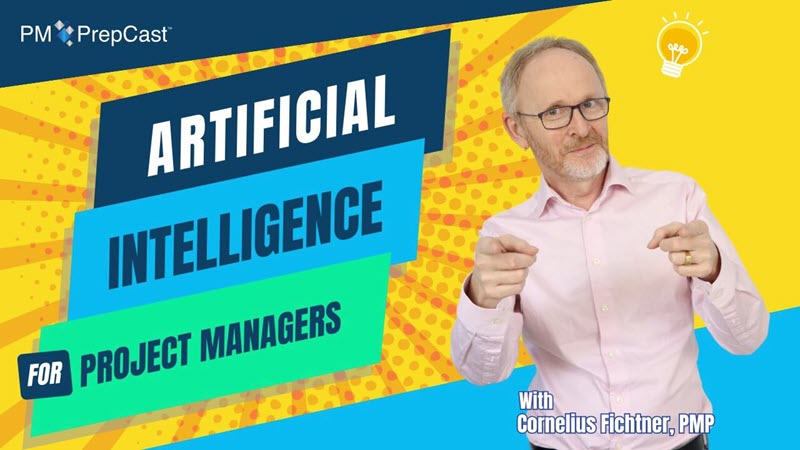Episode 230: The Tactical Approach to Implementing and Growing a PMO (Premium)
This episode is reserved for subscribers of the Premium Podcast. Learn how to subscribe to the Premium Podcast to access this interview and transcript...
This episode is sponsored by The Agile PrepCast for The PMI-ACP® Exam:
 In our last interview Bill Dow outlined some of the 12 steps that he recommends we need to go through in order to build a new PMO. These steps are based on his book The Tactical Guide for Building a PMOwhich provides PMO Managers with the knowledge and skills to develop, refine, and enhance their Project Management Office.
In our last interview Bill Dow outlined some of the 12 steps that he recommends we need to go through in order to build a new PMO. These steps are based on his book The Tactical Guide for Building a PMOwhich provides PMO Managers with the knowledge and skills to develop, refine, and enhance their Project Management Office.
But what’s next. What do you actually have to think of as you are trying to implement and grow it?
To determine what you have to do we are going to talk about the PMO decision chart, metrics and measurements, PMO audit, performance tracking and more.
Episode Transcript
Below are the first few pages of the transcript. The complete transcript is available to Premium subscribers only.
Podcast Introduction
Cornelius Fichtner: Hello and welcome to Episode #230. This is The Project Management Podcast™ at www.project-management-podcast.com and I am Cornelius Fichtner. Nice to have you with us.
You are listening to one of our Premium Episodes and these are recorded for and made available to only to our Premium Subscribers, that you. Thank you so much for your support.
In our last interview, Bill Dow outlined some of the 12 steps that he recommends we need to go through in order to build a new PMO. But what’s next? What do you actually have to think of as you are trying to implement and then grow your PMO? To determine what you have to do, we are going to talk about the PMO decision chart, metrics and measurements, PMO audits, performance tracking and more.
Well then, this time I’m definitely not going to sing and pretend that I’m Olivia Newton-John. Just enjoy the interview. Yes?
Podcast Interview
Female voice: The Project Management Podcast’s feature Interview: Today with Bill Dow, speaker and author of “The Tactical Guide for Building a PMO”.
Cornelius Fichtner: Hello Bill! And thank you for coming back on to the program and continuing our discussion of building a PMO by moving into implementing and growing the PMO. Hi!
Bill Dow: Hi! Well thank you! Thanks for having me back.
Cornelius Fichtner: Sure. So during the first interview, we covered some very important steps, 12 of them, in building a PMO. Please take a moment. Recap those steps for us again, will you?
Bill Dow: Sure, yeah! So 12 steps:
- So the step 1 is to start with a plan.
- Step 2 is to obtain an executive support.
- Step 3 is to create the PMO staples.
- Step 4: Select the 4 P’s to your PMO.
- Step 5 is Select your PMO model.
- Step 6 is Select your PMO maturity model.
- Step 7 is Obtain your PMO resources.
- Step 8 is Select your PMO training.
- Step 9 is Implement your PMO methodologies.
- Step 10 is Select your PMO reporting.
- Step 11 is Select your PMO tools and processes.
- And finally, step 12 is your PMO is complete, time to celebrate.
The one thing to consider is they are in order and they do build upon one another. So you want to handle them and do them in order and you won’t want to bounce around too much.
Cornelius Fichtner: Right and also as a reminder for everybody, these 12 steps are available as a Microsoft Project file from Bill’s website and there’s a link again going to be in the show notes to this. So those were the 12 steps for building a PMO. I’d like to focus on implementing the PMO and how after the PMO managers go through your 12 steps then do they implement the PMO. Tell me about implementing the PMO, Bill.
Bill Dow: So when you think about implementing your PMO, you really will create a series of artifacts through the build phase that you’ve collected along the way. So in my book, what I do is I documented 3 different or 3 main artifacts PMO managers will use when implementing a PMO.
The first thing they are going to use is management direction. That may be an email. That may be a PowerPoint. Whatever that is what your management is going to say: “I want this” or “I want that” when you implement your PMO.
I also talked about the PMO Build decision and that’s where you document it along the way your decisions of what you were going to build.
And then finally, your PMO recommendation report. We talked about that as well, is when you’re analyzing an existing PMO, you are going to want a set of recommendations. So these are the 3 main artifacts that you will use when building a PMO.
Cornelius Fichtner: Right and the build decision chart, we talked about that in the last interview. That’s the document where you go out and you discuss what the direction is going to be for your PMO, correct?
Bill Dow: Yes, that is exactly. You literally will document. You’ll say: “I want a supportive PMO. I want portfolio management. I want these processes. I want this training.” And so this is a document that you’re going to create along the way. You’re going to get buy-in along the way, but it’s certainly going to help you and be one of the main things that you will draw upon when you go and you start implementing your PMO.
Cornelius Fichtner: It all sounds extremely simple, this whole thing. Are you basically saying that you take the 12 steps that we talked about during the building of the PMO and now, you just implement them?
Bill Dow: Yeah, I do! It is simple. I’ve done it a couple of times and simple is relative of course right? But taking the 12 steps, taking the processes that I have defined in the book here, it will certainly give you the steps that you need to build a PMO especially with that PMO recommendation report, right? These are the things that you’ve documented when you’ve analyzed it. You said: You know these are the things that are going right. These are the things going wrong. And so I would take that as a major contributor as well in your implementation process.
Cornelius Fichtner: Right and I didn’t mean to trivialize this but you know the book is 468 pages long so there’s just more to this. Alright! So we’re done. We assessed the PMO. We wrote our recommendation report. We built it. We implemented it. Now what? Time to party?
Bill Dow: Yeah! Actually, a lot of people don’t do that, right? When you, I said it earlier. I said building a PMO is a huge project and when you finish a project, you roll in to production. You finished the bridge, whatever you’re doing, you do need to celebrate. And so part of it is just celebrating all the work you’ve done but also as a PMO manager, you really do need to celebrate and boost morale and once a year, even at the minimum once a year, you really show the appreciation to your employees and do celebrate it because it is a massive effort to run a PMO, deliver projects on time, under budget, and so on, so on, and so. I think it’s a great morale booster and so it’s often very, very important to do.
Cornelius Fichtner: Alright! So you’ve had your party. It’s the next morning. You’ve taken 2 aspirin for your headache and the hangover, what’s the next thing that people are going to do in building a PMO?
Bill Dow: Yeah! So like you said, the PMO’s building right now. The next thing to focus on is performance reporting. Reporting is a critical component for any PMO manager. And it’s really the only way to understand how well your projects and programs are executing. It’s literally, when the team says they can do something in 5 days and they take 10. Or they say they can do something in 3 days and they take 6 or whatever it is, performance reporting is really the next critical step to see how well the teams are performing and then make the tweaks where necessary.
Cornelius Fichtner: Okay, that makes sense - PMO metrics, PMO measurements and tracking, very important. It’s definitely a complicated process and one that people can spend months and months during which they develop this. Do you have any tricks in starting to collect metrics for us?
Bill Dow: I do! I certainly do. The first thing I would highly recommend is to hire a Six Sigma black belt. You are, as a PMO manager, you not necessarily going to be a metrics or a measurement expert, but the Six Sigma black-belter are certainly are. And so if you can bring them in for a short period of time to really help you get up and running, that would be a huge start.
Secondly, remember when we talked about creating the PMO maturity model earlier? In model, we specifically had categories. So we talked about things like regulatory compliance or Sarbanes-Oxley, we talked about the various categories. These are the categories that you will use to start the basis of your metrics and your measurements. So what I suggest is I really created in Chapter 14 of my book, I created a 3-step process with the help of a Six Sigma expert to be honest. And so what I say is grab step 1 is Grab your PMO model. Step 2 is Pull out your maturity categories from that model, and roughly 3 to 4 categories for each model. And what you’ll do is you’ll create your KPI’s from that category.
With your KPI’s, you’ll capture things like the purpose, the baseline number, the target number, the unit of measure, any frequency, any leading and lagging indicators and then reporting methods. Once you have done that, you have yourself a KPI for the PMO that it can be measured. It’s actually this simple.
Cornelius Fichtner: Yeah, I was just going to say. It sounds pretty simple these steps. Give me some more details, what are metrics that PMO managers that are just starting out can create immediately?
Above are the first few pages of the transcript. The complete PDF transcript is available to Premium subscribers only.
- Last updated on .
- Hits: 13226


